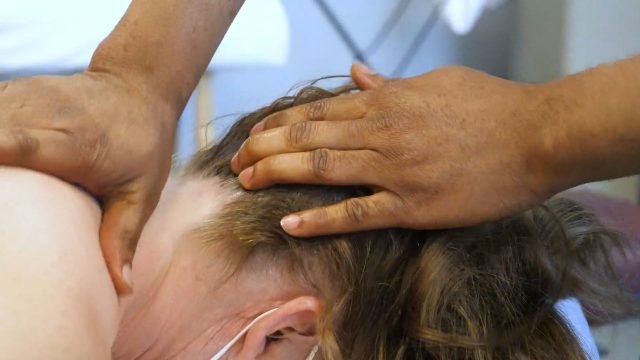Choose A Massage Therapy Career
April 29, 2015

Do you work well with people? Are you a caring person who others trust in the workplace? Concerning your ideal job, would you prefer a position with a desk and office chair, or one that allows you to move around and work with both your brain and your hands? If you prefer the active route, and your answer to the first two questions was “yes,” you may be the perfect candidate to enter First Institute’s Massage Therapy training program!
Massage Therapy: an Art and a Science
Massage therapists use the power of touch to manipulate the body’s soft tissue, which includes muscles, ligaments, tendons, fascia and skin. Considered both a science and an art form, massage therapists work to relieve pain, rehabilitate sports and other injuries, and decrease stress in clients. Because of massage’s positive effects, some seek treatment for no reason other than that it makes them feel better about themselves.
During a normal week, massage therapists will spend their time executing routine practices such as:
- Discussing symptom concerns, medical history and massage therapy goals with clients.
- Evaluating clients for their specific massage therapy needs.
- Massaging clients’ soft tissues for the purpose of healing or comforting.
- Guiding clients toward overall healthier lifestyles, which may include tips for stretching and strength training.
As a massage therapist, you’ll use your well-trained hands, fingers, palms and elbows to work the body’s soft tissues. Some areas are sensitive and need gentle care, while others require more intense kneading to heal. Depending on the situation, clients may experience slight discomfort during a massage, but this usually is the byproduct of a deep-tissue treatment. Most massages are considered extremely satisfying.
Within the workplace, massage therapists may practice a broad range of styles, known as modalities. Dozens of modalities exist, but the most common types are deep-tissue, sports, Swedish and remedial. Choosing to specialize in multiple techniques may open up your career options later on.
Set Your Own Flexible Hours
Speaking of options, massage therapists’ schedules typically carry plenty of flexibility. According to the Bureau of Labor Statistics, only about 25 percent of massage therapists worked full time in 2010. This is because most schedule their days by appointment, so they can set their hours as they’d like.
To learn more details about what it’s really like to go through massage therapy training, contact First Institute today!

